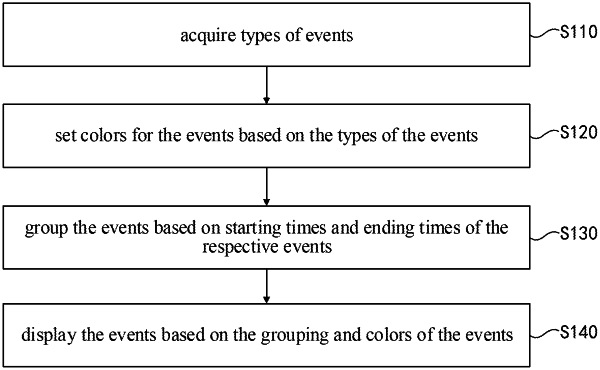| CPC G06F 16/287 (2019.01) [G06F 16/24578 (2019.01)] | 12 Claims |

|
1. An event display method, comprising:
acquiring data representing a plurality of events, each event having a type, a starting time and an ending time;
setting colors for the events based on the types of the events;
grouping the events based on the starting times and the ending times of the respective events; and
displaying the events based on the grouping and colors of the events;
wherein the grouping the events based on starting times and ending times of the respective events comprises:
adding events of the same type into a group; and
further grouping the events of each group based on starting times and the ending times of the respective events of the group;
wherein the further grouping the events of each the group based on starting times and ending times of the respective events of the group comprises:
ranking the events of the group in a chronological order based on starting time of each of the events of the group, to obtain a ranked order of events;
reserving the first event of the ranked order in the group;
for each additional event of the ranked order, sequentially comparing the starting time of the additional event with an ending time of the group, wherein the ending time of the group is an ending time of the last event reserved in the group, and
when the starting time of one of other events is later than the ending time of the group, reserving the additional in the group; and
when the starting time of one of other events is earlier than the ending time of the first group, assigning the additional event into a next group.
|